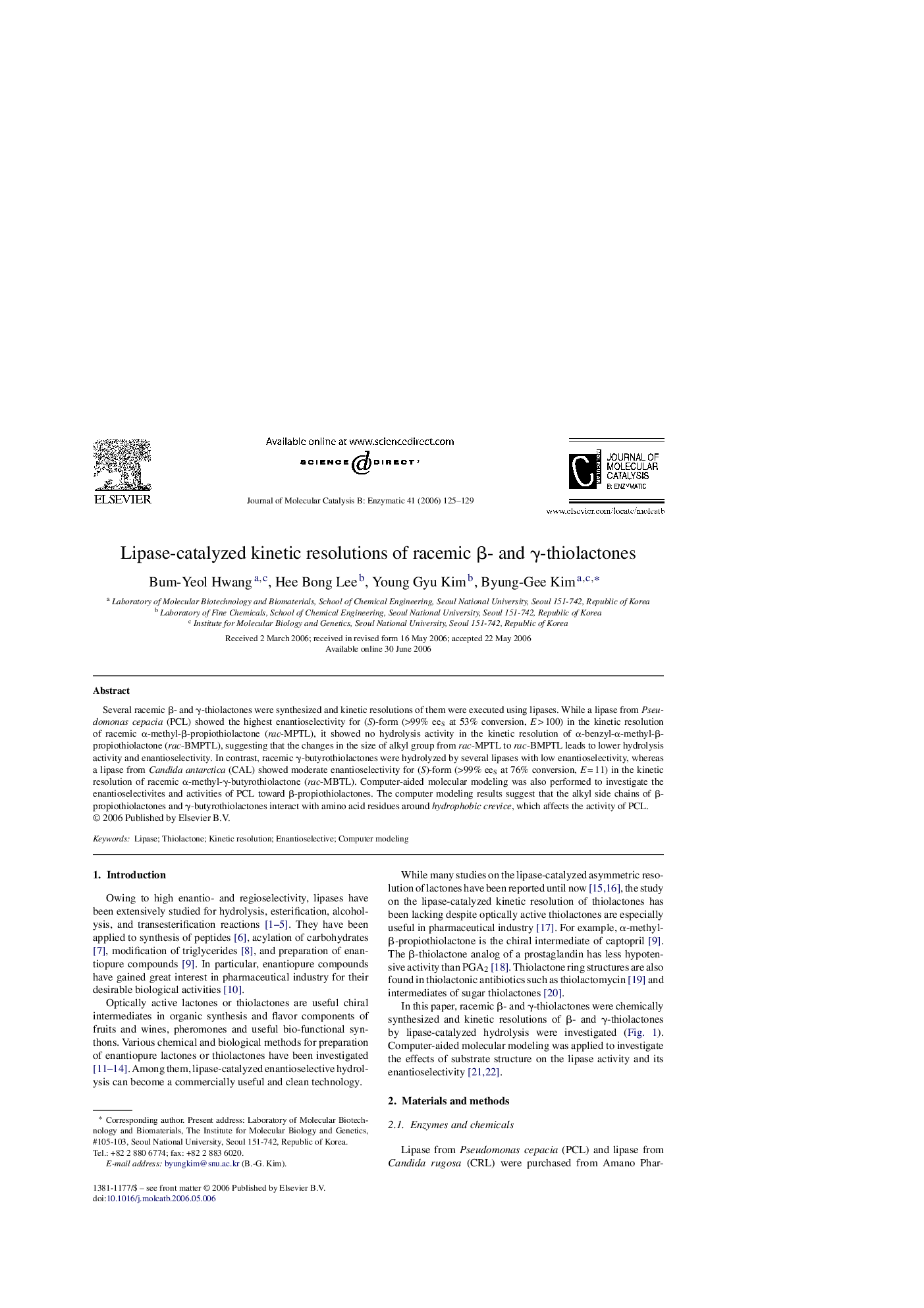| Article ID | Journal | Published Year | Pages | File Type |
|---|---|---|---|---|
| 71286 | Journal of Molecular Catalysis B: Enzymatic | 2006 | 5 Pages |
Abstract
Several racemic β- and γ-thiolactones were synthesized and kinetic resolutions of them were executed using lipases. While a lipase from Pseudomonas cepacia (PCL) showed the highest enantioselectivity for (S)-form (>99% eeS at 53% conversion, E > 100) in the kinetic resolution of racemic α-methyl-β-propiothiolactone (rac-MPTL), it showed no hydrolysis activity in the kinetic resolution of α-benzyl-α-methyl-β-propiothiolactone (rac-BMPTL), suggesting that the changes in the size of alkyl group from rac-MPTL to rac-BMPTL leads to lower hydrolysis activity and enantioselectivity. In contrast, racemic γ-butyrothiolactones were hydrolyzed by several lipases with low enantioselectivity, whereas a lipase from Candida antarctica (CAL) showed moderate enantioselectivity for (S)-form (>99% eeS at 76% conversion, E = 11) in the kinetic resolution of racemic α-methyl-γ-butyrothiolactone (rac-MBTL). Computer-aided molecular modeling was also performed to investigate the enantioselectivites and activities of PCL toward β-propiothiolactones. The computer modeling results suggest that the alkyl side chains of β-propiothiolactones and γ-butyrothiolactones interact with amino acid residues around hydrophobic crevice, which affects the activity of PCL.
Related Topics
Physical Sciences and Engineering
Chemical Engineering
Catalysis
Authors
Bum-Yeol Hwang, Hee Bong Lee, Young Gyu Kim, Byung-Gee Kim,
